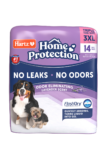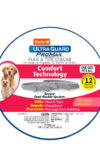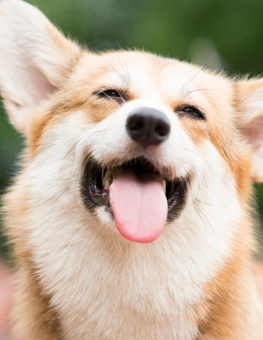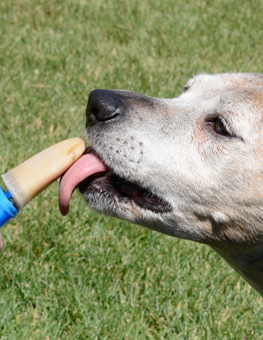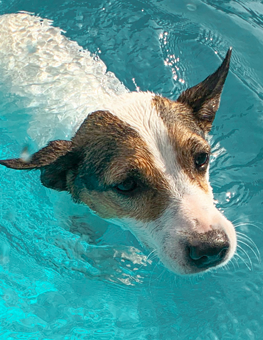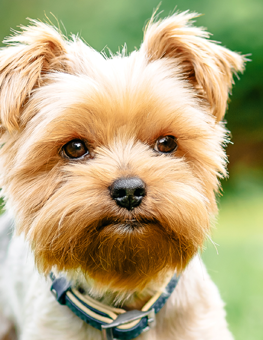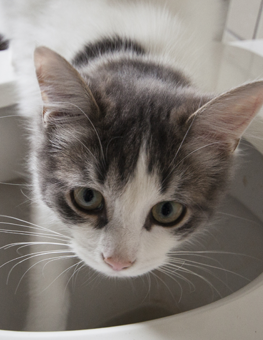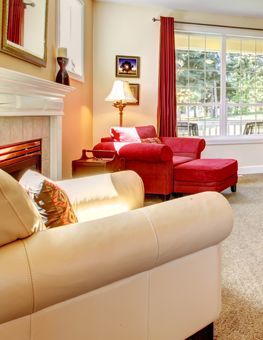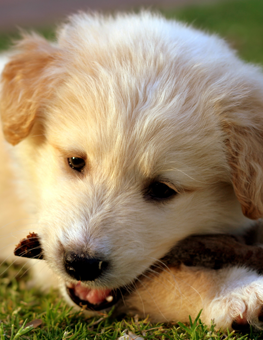Summer Safety Tips for Dogs
Summer is a terrific time to be a dog owner. It’s the perfect time to run, swim and play with your dog in amazing weather.
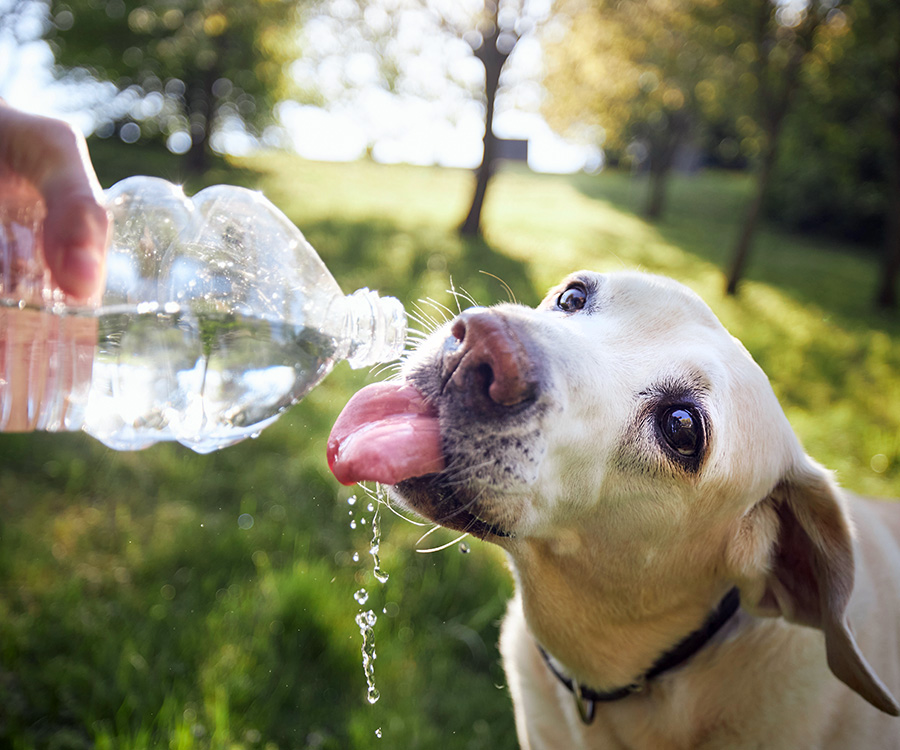

Prevent dehydration dog with easy access to fresh and cool water both indoors and outdoors.
However, summer also brings unique risks to your dog’s health that you should keep in mind throughout the season. That’s why the Hartz team compiled a list of safety tips for dogs on how you and your furry friends can have safe fun in the sun!
Basic Safety Tips
- Prevent dehydration by providing your dog with easy access to fresh and cool water both indoors and outdoors. Keep the water in shady areas outside to prevent it from warming up or evaporating, and try adding ice cubes and frozen chicken or beef broth to encourage your dog to take in more fluids. It also helps to carry a portable dog water bottle at all times because a hydrated pup is a happy pup!
- Use sunscreen on his nose and ears. Like people, dogs can burn in the sun and also need sunscreen to protect their skin. Dogs naturally have some protection from their fur, but that doesn’t mean they are fully protected from the sun’s dangerous rays. To prevent painful sunburns on your outdoor-loving furry companions, apply a waterproof sunscreen to cover the tips of your dog’s ears and nose, the skin around his mouth, belly area, and back. And remember that light-colored dogs are particularly susceptible to sunburn so it’s important to keep an extra close eye on them during these hot summer days.
- Limit your dog’s exposure to mid-day sun. Morning and evening temperatures are appreciably cooler and are less likely to cause your dog physical stress.
- Never leave your dog unattended in a parked car even if the windows are left partially open. Internal temperatures on a sunny day can quickly skyrocket to 140° plus.
- If you are traveling with your dog, write down the name and number of a local veterinarian so you know who to call in the event of an emergency.
- Make sure your pup is fitted with a collar and dog ID tag in case he gets lost. Planning a trip this summer? Pack your dog’s bag with essentials before you hit the road to make the trip as smooth as possible and prevent your dog from becoming lost in unfamiliar surroundings. Always have someone watching your dog if they’re off their leash. Make sure they are fitted with a collar and dog ID tag in case they get lost so your dog can return safely back into your loving arms if you get separated.
- If you are flying with your dog, try and book an off-peak flight when delays are less likely and you will be able to pick him up quickly upon arrival.
- Spend some time with him in water so that you can gauge his swimming ability.
- Consider a life preserver for your dog if you’re going to be on a boat, even if he knows how to swim. If he hits his head while getting knocked off a boat, the life preserver could save his life.
- Avoid parks and lawns that have been recently sprayed or fertilized. Allow the chemicals time to soak into the turf before allowing your dog access.
-

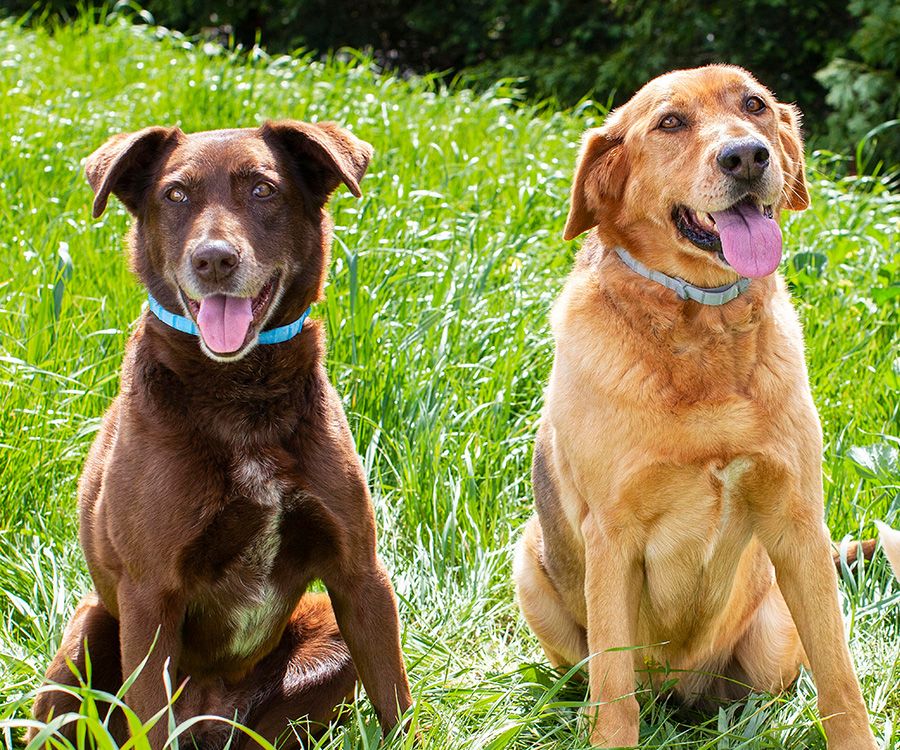
Flea and other allergens can cause discomfort. Keep your dog safe this summer with a flea control regimen.
Visit the veterinarian if your pup is displaying uncomfortable symptoms like itchy, red, moist or scabbed skin, excessive scratching, coughing, and sneezing. Fleas, mold, flowers, and other potential allergens are common during summer and could cause discomfort to your furry friends. It’s our job as pet parents to understand the signs of allergies and find the right treatment for their symptoms.
If your dog is sensitive to flea bites, consider starting a flea control regimen before the season starts to prevent an infestation. Also, cleaning your pup’s bedding once a week can help get rid of dust, while a weekly bath can help alleviate itchy skin by removing environmental allergens and pollen from your dog’s fur. - Consider spaying or neutering your dog, especially if he spends time outdoors unsupervised.
- Keep your dog safe inside. The Fourth of July can be enjoyable for kids and adults, but your furry family members may not share the same enthusiasm for the holiday. Loud noises and sudden flashes of fireworks can disorient pets and send them into a scared frenzy. Be sure to keep your dog safe and cozy inside and if possible, surrounded by comforting toys and treats to keep them occupied. You may want to put down some training pads in case your dog gets excited and has an accident. Also, fireworks can be mistaken for sticks, which makes your dog think that they are toys. Keep fireworks out of reach from your pups so they don’t accidentally eat or play with them. Fireworks can cause severe burns, trauma, and are potentially toxic to your furry friends.
- When enjoying a summer barbecue, be sure to keep the grill away from your pup and close the lid whenever possible to ensure they can’t get inside and hurt themselves. Summer brings beautiful weather and lots of outdoor gatherings with barbecues and cozy fires, but be alert, your pup may try to take burning sticks from the fire thinking they are toys. Another potential hazard may be food stuck to barbecues, as your pup could attempt to lick it off the hot surface and burn his mouth.
Canine Heat Stroke
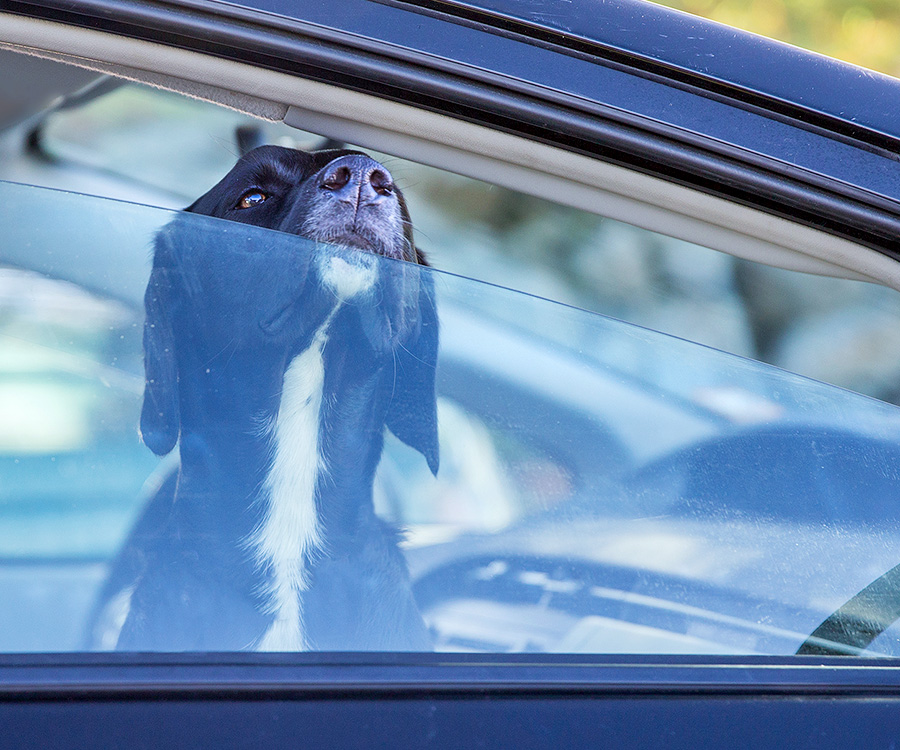

Heat stroke is common, and a cracked car window is not enough to cool your pet or keep them safe on a hot day.
As we head towards the hottest days of summer, it is important to remember that heat stroke is a common occurrence this season and can be a serious threat to our furry loved ones. This is often a result of when dogs are left in a car on a hot day, or when they exercise in the heat without proper hydration. Always remember that a cracked car window is not enough to cool your pet.
Dogs are not as efficient as humans at cooling their body temperature. As a result, they are much more susceptible to overheating and getting heat stroke. Heat stroke can be fatal with brain damage occurring in as little as 15 minutes.
On hot, steamy days keep your dog indoors to ensure he stays cool. Try wetting them thoroughly and providing hydration. If your dog has been in the heat for an extended period of time, keep an eye out for symptoms or signs of canine heat stroke:
- Heavy panting, a rapid heartbeat and glazed eyes
- Dark or bright red tongue and gums
- Thick, sticky saliva
- Excessive thirst
- Lethargy, dizziness and a lack of coordination or signs of weakness
- Diarrhea or vomiting
- Unconsciousness
If your dog shows any of these symptoms, take immediate steps to lower his body temperature and then call your vet. Following these tips could help save your dog’s life:
- Move your dog into the shade.
- Give you dog access to water or let him lick ice cubes.
- Get him wet. Apply wet towels or spray him down. Do not use very cold water which will restrict your dog’s blood flow by slowing down his internal cooling process. Just get him wet.
- Call your vet.



